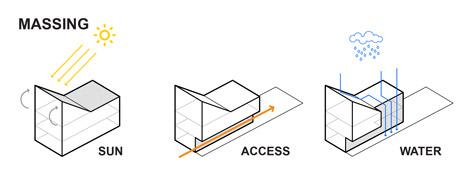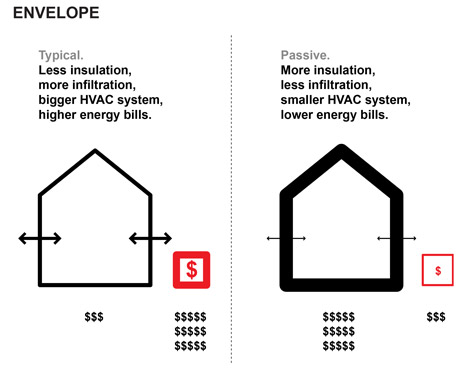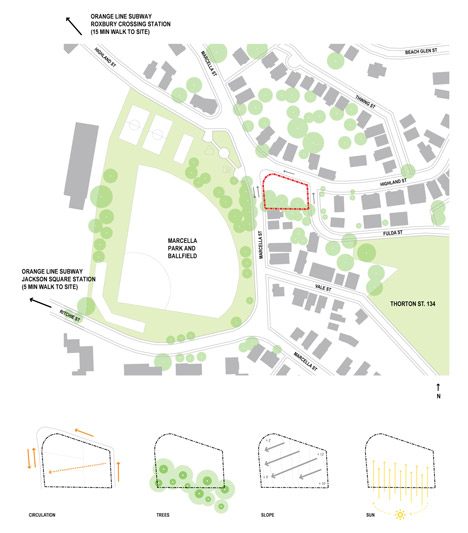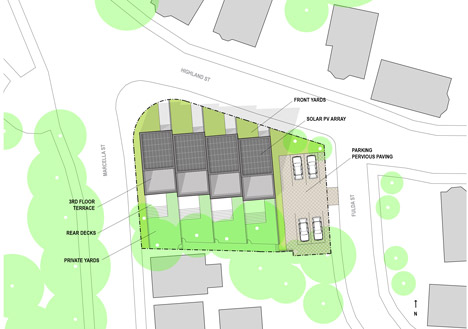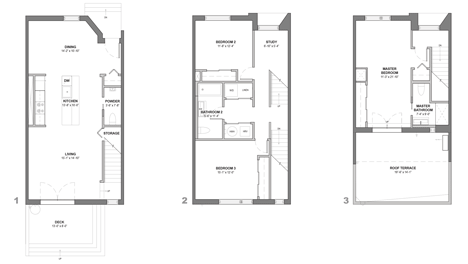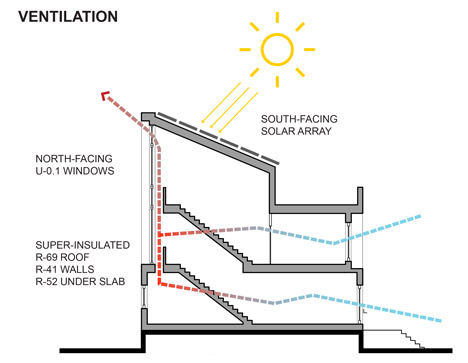Roxbury E+ townhouses in Boston designed to produce more energy than they use
Solar panels cover the rooftops of these four townhouses in Boston by local firm ISA, allowing them to sustainably produce more energy and hot water than their occupants are likely to use (+ slideshow).
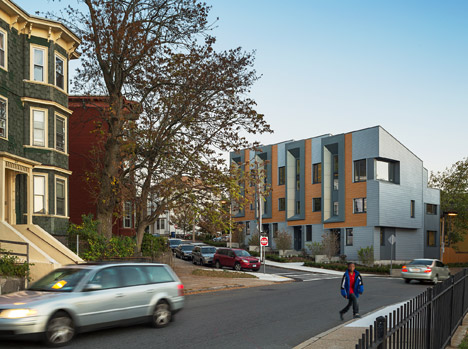
Boston-based ISA won a competition organised by the city council to design the row of three-storey townhouses for a vacant plot in the Roxbury neighbourhood.
The project is a part of the E+ Green Building Program, a pilot scheme to develop energy-positive housing in the city. Named Roxbury E+, after the neighbourhood and this scheme, the houses have timber frames are clad with both metal panels and tanned wood.

A number of measures to save and produce energy were built into the 185-square-metre houses, giving the development a positive energy rating.
Roof-mounted solar panels and large windows that maximise natural daylight help to offset energy consumption, providing not just enough electricity and hot water for the housing, but a surplus.
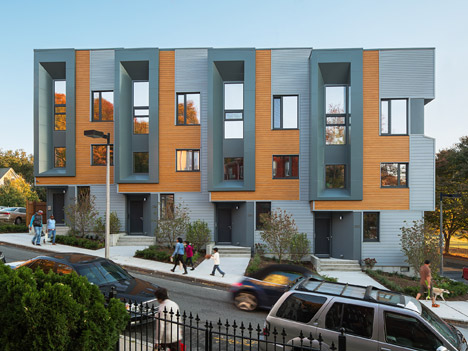
"The energy output is targeted to exceed the demands of the occupants, with surplus to be sold back to the grid," said the architects.
Taps, shower heads and toilets have a reduced flow designed to minimise water consumption, while gardens are planted with native and drought-tolerant species, intended to further reduce water wastage.
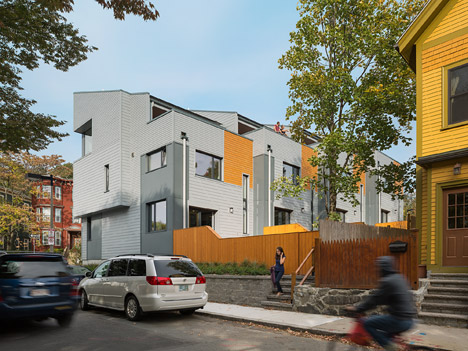
High insulation levels including triple-glazed windows contribute to the project's LEED Platinum certification – the highest energy performance rating that can be given to a building.
"As the site significantly slopes, the homes cascade down the hill to express the unique character of the site and to allow for ideal solar orientation," the architects said.
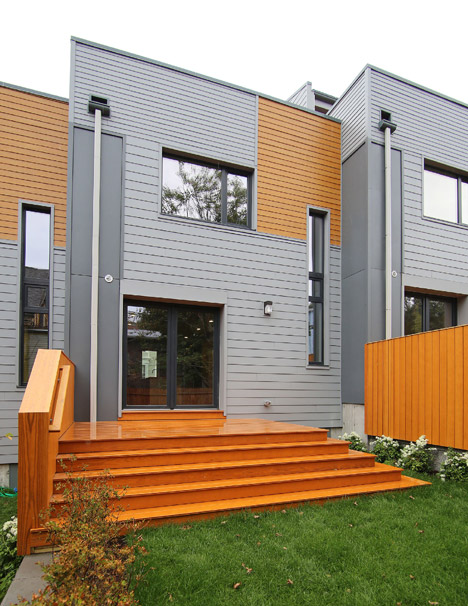
The architects conceived the shape of the properties as a box, deformed to fit the sloping site. The stepped form adapts the terrace to the sloping site, while the mono-pitched roofs that slope away from the street achieve an optimum angle for the solar panels.
"The design process began with an elemental box – simple and affordable to construct, and predictable in its ability to be tightly air sealed and insulated," the team said.
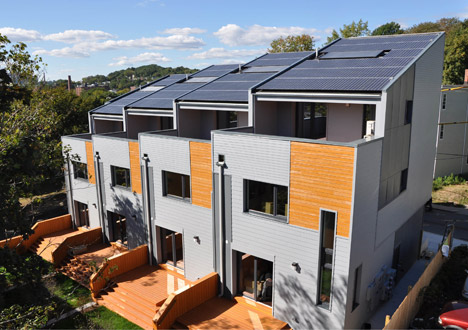
Each property has a two-storey-high inverted bay window, designed to maximise natural light and ventilation, while playfully referring to the period features of the neighbourhood's traditional New England-style timber-framed houses.
"Roxbury is an eclectic neighbourhood with lots of character and charm," said the design team. "The architecture of the project introduces rich patterning through cladding components and formal gestures to create unique textures and visual rhythms."
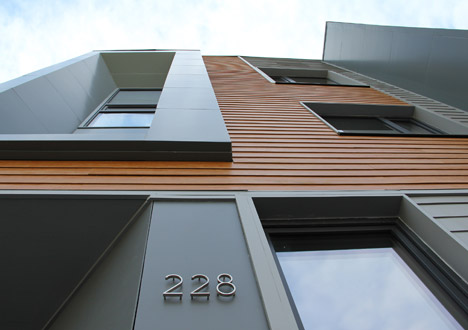
While three of the townhouses will be sold at market rate, one will be offered at 80 per cent of the value – a measure that intends to preserve the balance of the mixed-income neighbourhood.
"We hope the project will be a catalyst in helping to educate a new generation of local green-collar workers and stimulate the local economy and job opportunities," said the studio.
Photography is by Sam Oberter unless specified otherwise.
Project credits:
Design architect: Interface Studio Architects
Architect of record: Urbanica Design
Structural engineer: DM Berg Consultants
Civil engineer: C.L.G. Associates
MEP/solar: Engineering Design Build
Landscape designer: Boca Raton
LEED consultant: Urbanica Design
HERS rater: Conservation Services Group
Builder: Urbanica Construction
